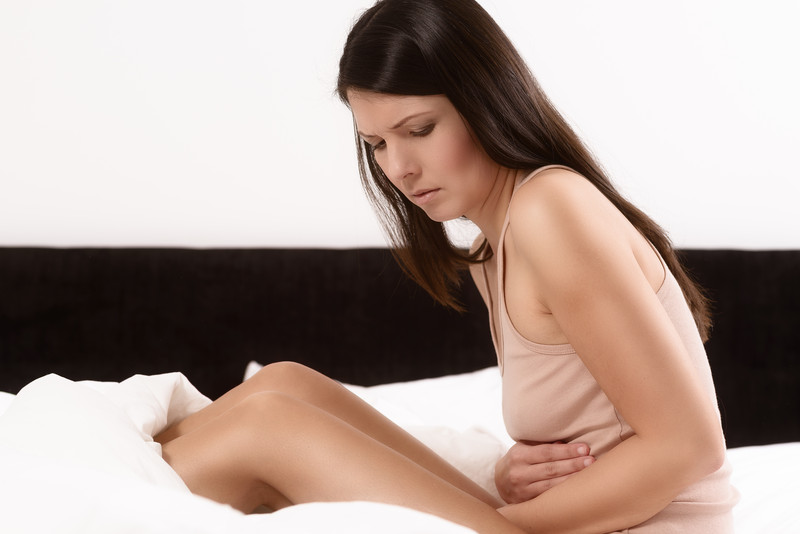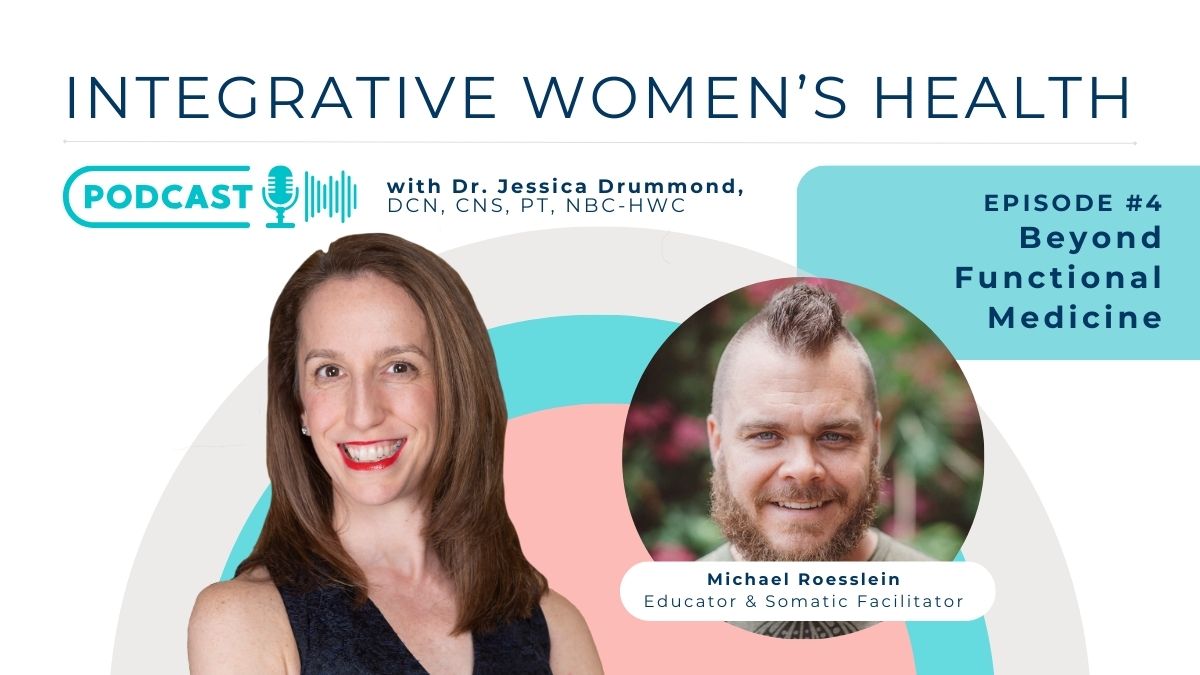
One of the reasons that relieving pelvic pain is so challenging is that pain in different systems within the pelvis can overlap. For example, in rats where experimental colitis (colon irritation) was induced, many of the rats also experienced bladder and urethral pain (Yoshikawa et al., 2015). Thus, there is clear overlap between bladder pain and gastrointestinal symptoms. Root cause relief for SIBO and interstitial cystitis related bladder pain requires optimizing the functioning of the digestive system and health of the gut microbiome.
Women with interstitial cystitis (IC) often have overlapping gastrointestinal symptoms.
Let’s focus today on one common GI issue called Small Intestinal Bacterial Overgrowth (SIBO) and how that can relate to pelvic pain of the bladder. More and more research is coming out about the microbiome in the digestive system. As it turns out, humans have far more bacterial cells than human cells living in our bodies. The vast majority of those bacteria live in the large intestine. If we take care of our gut bacteria (otherwise known as the gut microbiota), then the beneficial bacteria within the colon serve multiple purposes to keep us healthy.
For example, supportive (commensal) gut microbes, probiotics, displace pathogens, synthesize some vitamins, and support the functioning of the immune system. But, when too many microbes (supportive or pathogenic) leak back from the large intestine into the small intestines… problems will occur.
How will you know if your patient is struggling with SIBO?
The most common test is called a lactulose breath test. A physician can order the lactulose solution, for the patient to drink. The patient will then breathe into collection tubes 2-3 hours later (transit time of the solution: 3 hours is better to also see the large intestine.)
Then hydrogen and methane gas are measured. If hydrogen is increased by 20 ppm or more it’s positive, if methane is increased by 3 ppm or more, it’s positive. If both hydrogen and methane are increased by 15 ppm or more, the test is positive.
In terms of actual gastrointestinal symptoms, hydrogen gas is more commonly associated with diarrhea and methane is more commonly associated with constipation.
However, a systemic review published in 2008, found no gold standard test for SIBO based on the lack of quality evidence available at the time of the review (Khoshini, Dai, Lezcano, & Pimentel, 2008).
While more research needs to be done on the validity, sensitivity, and specificity of the testing for SIBO, there is data that shows the relationship between SIBO and IC.
Patients with IC, who also had GI symptoms – a majority of them tested positive for SIBO (Weinstock, Klutke, & Lin, 2008). Of those who did and were treated with an antibiotic plus a prokinetic therapy, 47% had sustained global improvement in their IC.
Click to Tweet: For patients with both IC and SIBO, treatment of the SIBO = 47% improvement in IC symptoms too!
Thus, when we’re working with patients with pelvic pain, we need to be mindful of their symptoms across systems. In the case of many of the women with IC in this study, it was necessary to address the digestive system in order to more fully relieve the associated bladder pain.
If you’re working with an IC patient and you suspect that she might have SIBO, what are some clinical symptoms that you can look for, and what dietary changes can be effective to relieve SIBO? Relief for SIBO and interstitial cystitis related bladder pain using a root cause approach requires assessing digestive function, and gut microbial health.
Symptoms of SIBO (Abbasi, Zahedi, Darvish Moghadam, Shafieipour, & HayatBakhsh Abbasi, 2015):
• Diarrhea
• Constipation
• Abdominal pain
• Bloating
• Changes in bowel habits
*Clinically, I find that bloating symptoms are the key symptom to look for when considering SIBO.
Various antibiotic therapies are recommended for medical treatment of SIBO, but unfortunately these can lead to side effects affecting the overall health of the symbiotic healthy bacteria in the digestive system (Malik, Xie, Wine, & Huynh, 2011; Weinstock et al., 2008)
A functional nutrition approach to relief for SIBO and interstitial cystitis related bladder pain…
Instead of antibiotics, using antibacterial herbs to rid the small intestines of the pathogens and to concurrently make dietary changes to relieve symptoms and restore depleted nutrients is gentler and effective in most of the patients that I work with that have comorbid pelvic pain and SIBO.
I recommend collaborating with a skilled functional nutrition professional or herbalist to provide antibacterial herbs such as oregano oil, wild garlic and berberine. A specific herbal antimicrobial protocal has been studied by researchers at John’s Hopkins University, and found to be equally as effective as using antibiotics to resolve SIBO symptoms (Chedid et al., 2014).
References:
Abbasi, M. H., Zahedi, M., Darvish Moghadam, S., Shafieipour, S., & HayatBakhsh Abbasi, M. (2015). Small bowel bacterial overgrowth in patients with irritable bowel syndrome: the first study in iran. Middle East J Dig Dis, 7(1), 36-40.
Khoshini, R., Dai, S. C., Lezcano, S., & Pimentel, M. (2008). A systematic review of diagnostic tests for small intestinal bacterial overgrowth. Dig Dis Sci, 53(6), 1443-1454. doi: 10.1007/s10620-007-0065-1
Malik, B. A., Xie, Y. Y., Wine, E., & Huynh, H. Q. (2011). Diagnosis and pharmacological management of small intestinal bacterial overgrowth in children with intestinal failure. Can J Gastroenterol, 25(1), 41-45.
Weinstock, L. B., Klutke, C. G., & Lin, H. C. (2008). Small intestinal bacterial overgrowth in patients with interstitial cystitis and gastrointestinal symptoms. Dig Dis Sci, 53(5), 1246-1251. doi: 10.1007/s10620-007-0022-z
Yoshikawa, S., Kawamorita, N., Oguchi, T., Funahashi, Y., Tyagi, P., Chancellor, M. B., & Yoshimura, N. (2015). Pelvic organ cross-sensitization to enhance bladder and urethral pain behaviors in rats with experimental colitis. Neuroscience, 284, 422-429. doi: 10.1016/j.neuroscience.2014.08.064







